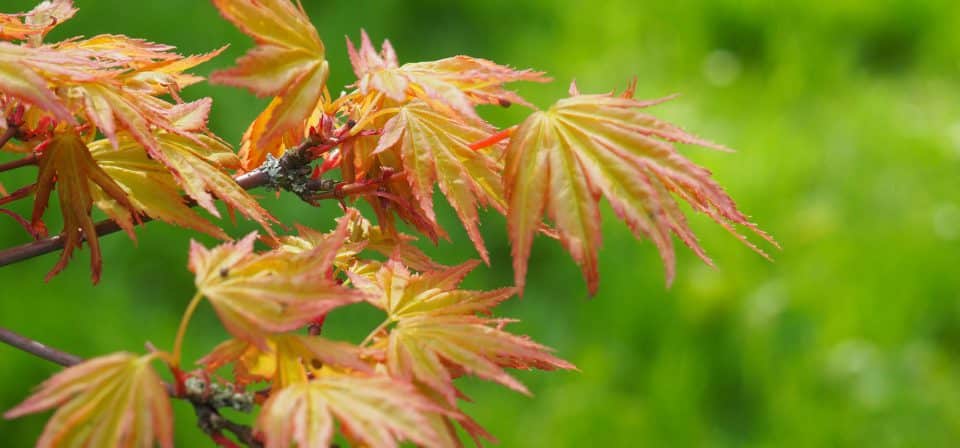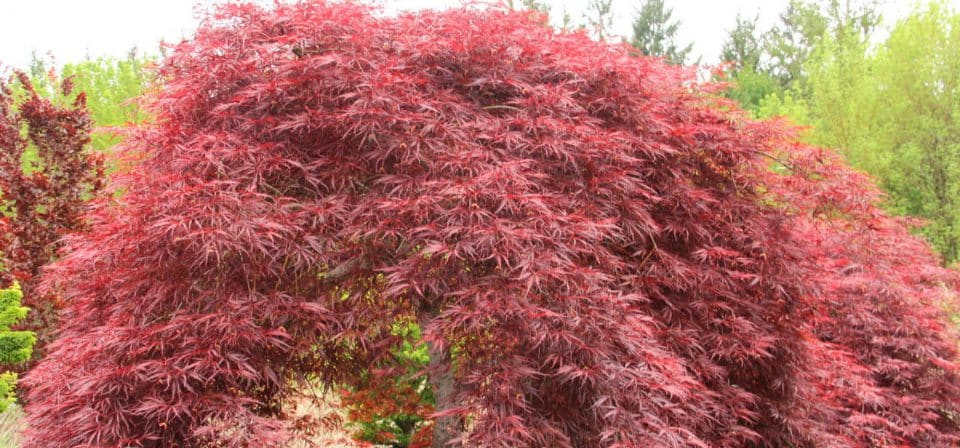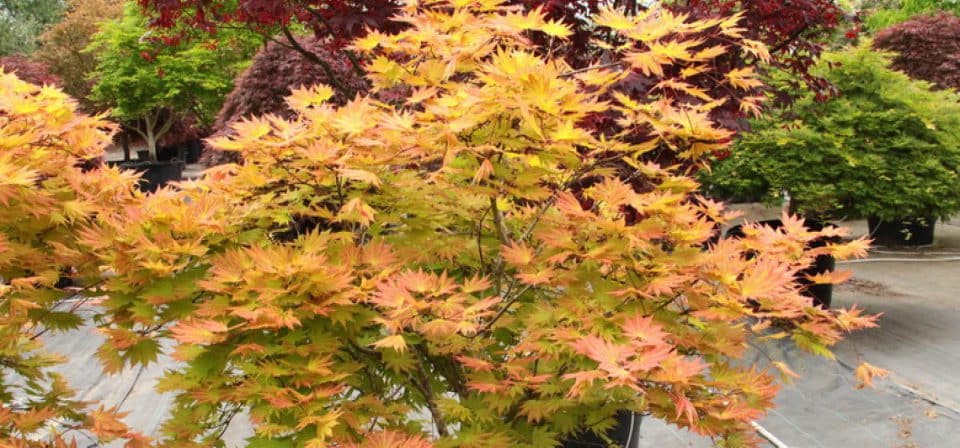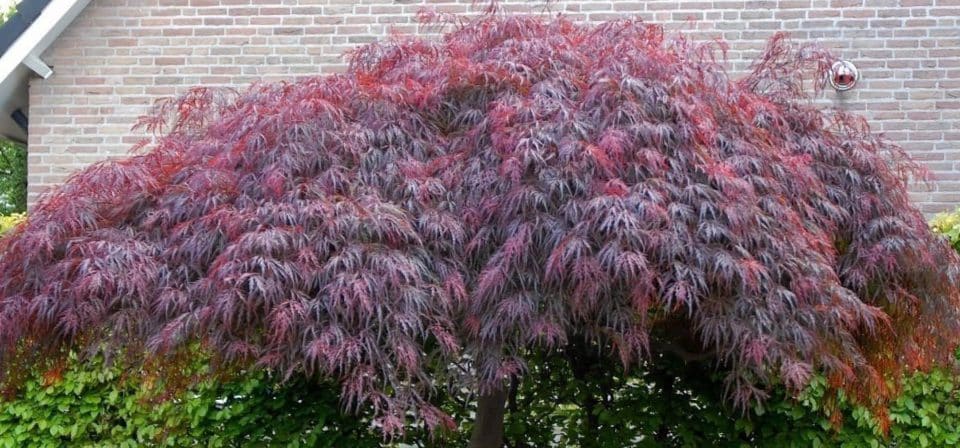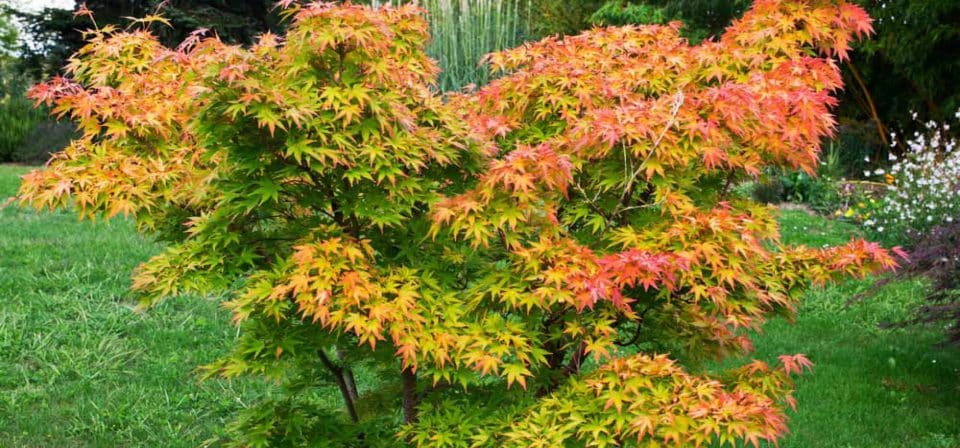Acer palmatum ‘Inaba-shidare’ (AGM)
A tree with small, finely cut, purple-red leaves turning bright crimson in autumn.
Acer palmatum dissectum
A summer green arching variety that turns yellow and orange as the year progresses.
Acer shirasawanum ‘Autumn Moon’
Peach, pink and flame colours on the same leaf in autumn. Quite stunning but the spring and summer foliage is equally dramatic. Pumpkin-green leaves at first with a second growth spurt in summer in which the leaves develop a pink halo.
Acer palmatum dissectum ‘Garnet’ (AGM)
Noted for its outstanding colour and vigour, award-winning ‘Garnet’ is medium sized with large, deeply cut, dissected leaves that turn from purple in the summer to a sensational scarlet in the autumn. A very popular cascading, mound-shaped shrub that will stand out in the landscape.
Acer shirasawanum ‘Aureum’ (AGM)
Deciduous and slow growing with stunning seasonal foliage. The branches of this Acer display rounded pale, buttery-yellow leaves in the spring with tiny crimson flowers. In the summer, the tree bursts into life with bright yellow/lime foliage, before turning golden orange with red margins in the autumn.
Acer palmatum ‘Orange Dream’ (AGM)
This award-winning Acer is medium sized with something to offer every season. Beautiful golden yellow-orange spring growth, a chartreuse for the summer, turning stunning orange gold in the autumn. As the leaves fall, they expose the graceful outlines of the bright-green bark and twigs for the winter. As it’s a slow growing deciduous Acer, it’s ideal for small gardens or a large container. It would look great in one of our lime green National Trust Pots (£39.99) with some Kelkay Green Slate Chippings (£5.99 a bag, or 2 for £10) around it.
Where should I plant them?
Acers are adaptable plants, but are unhappy in wet or dry conditions and find very alkaline soils difficult to cope with so we recommend planting with an ericaceous compost such as Levington’s Ericaceous Compost (£4.49, 20L bag). Some shade is an advantage for green-leaved or variegated varieties which may be scorched by strong sunlight, but red leaves do need sun to develop their colour to the full. Cool dappled shade with protection from cold north or easterly winds will suit most Acers & if you can’t provide this in the border, you could choose a smaller variety & keep it in a container instead.
Growing in a pot?
Acers are great to grow in a pot as a feature. Select a sturdy pot about twice the size of the one the Acer is already in and carefully consider the position of the pot before you plant. Place in a sheltered spot out of the wind and in dappled shade to get the best displays of colour from your tree. Make sure the pot has good drainage holes and stand your pot on feet so that water can escape in winter. Keep plants well-watered – check that the leaves aren’t preventing the rainfall getting to the compost.





